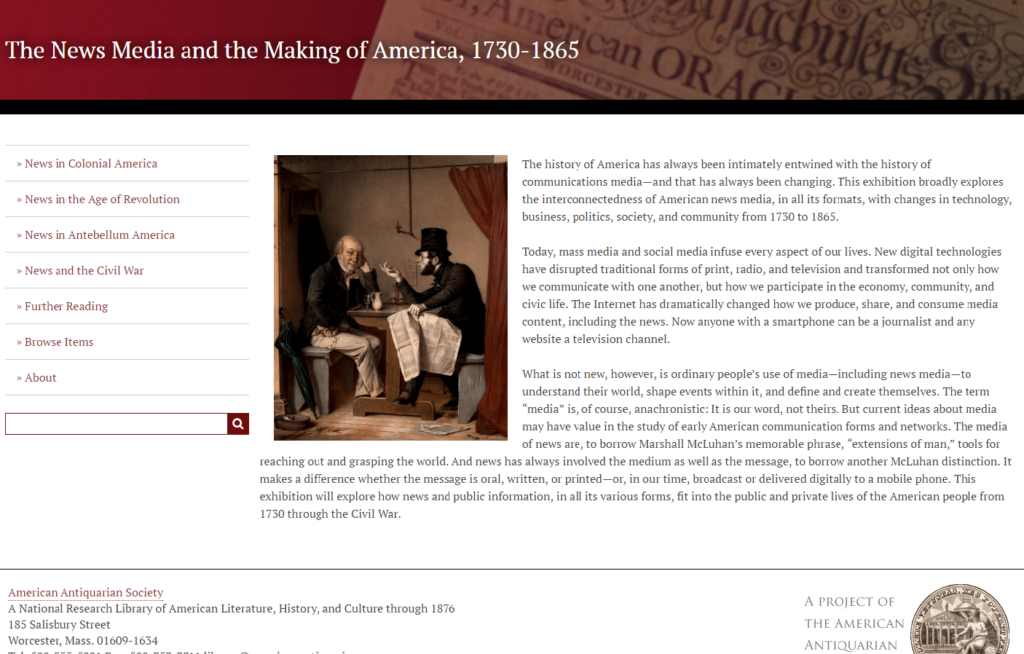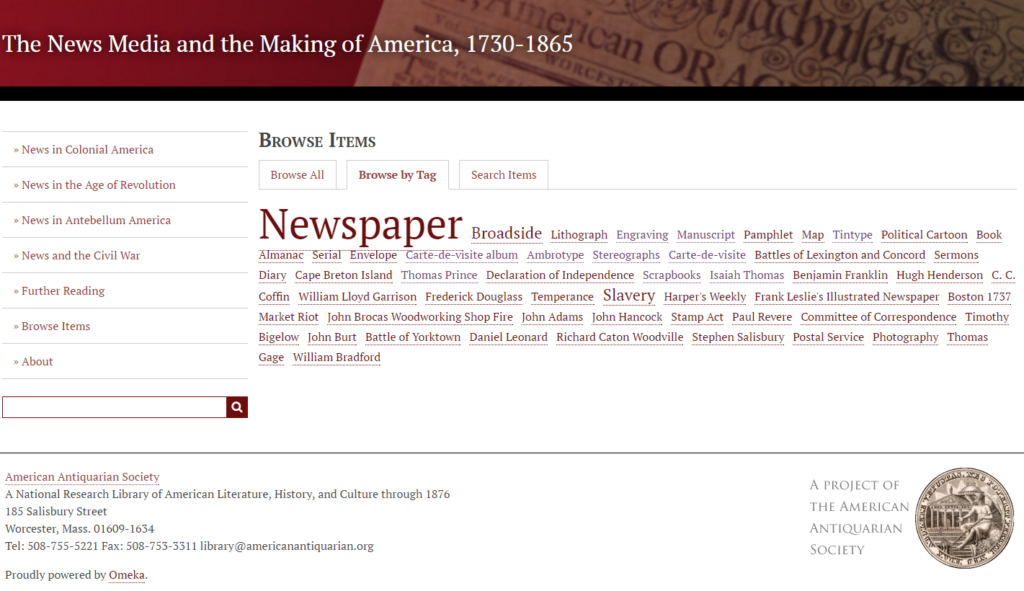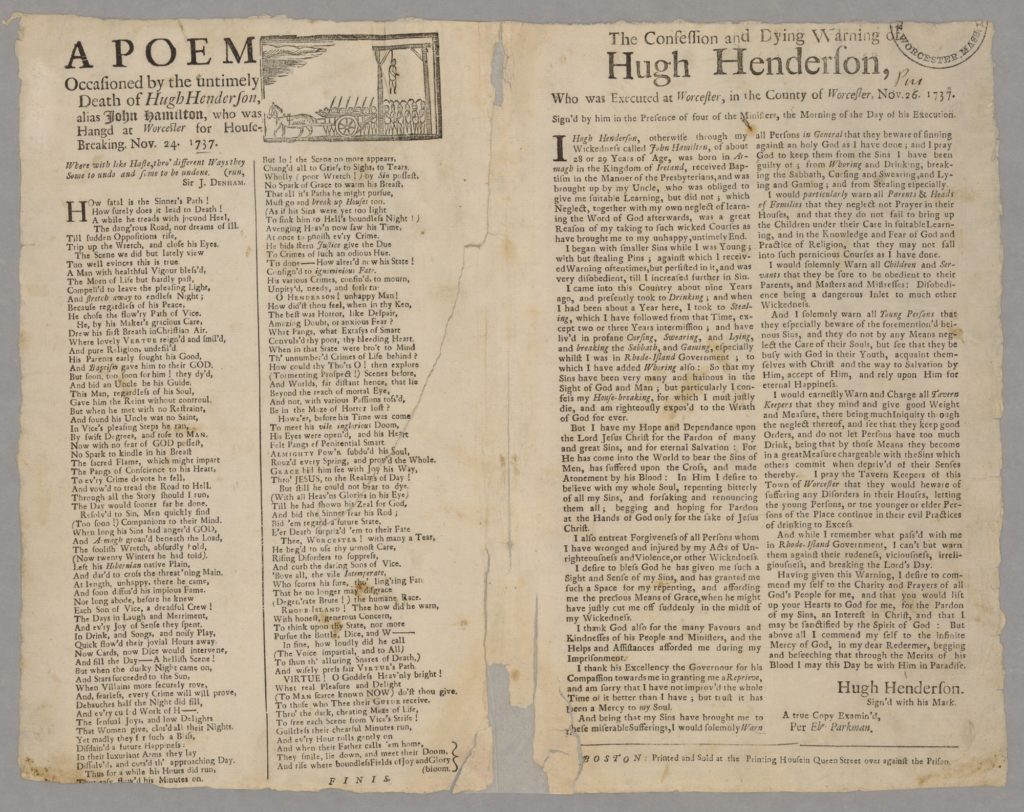During the summer of 2015, AAS hosted a two-week National Endowment for the Humanities Summer Institute for School Teachers, during which twenty-five K-12 teachers from all over the country convened for an intensive institute that featured lectures and discussions with scholars, field trips, and many hands-on workshops with original material from the Society’s collections. That institute, called The News Media and the Making of America, 1730-1865, is now the base of our newest online exhibition.
 Codirected by David Paul Nord, professor emeritus at Indiana University, and James David Moran, director of outreach at AAS, the institute sought to explore the function of news and public information in the community life of America, from the colonial period through the Civil War. This included a variety of community types, as well as the diverse and changing milieu of communication forms and technologies: sermons and lectures, books and pamphlets, magazines and newspapers, photographs and illustrations, letters and word-of-mouth. The aim was to understand the role of communication, especially print media, in the political, social, and cultural life of the American people in an era of rapid change in politics, business, and technology.
Codirected by David Paul Nord, professor emeritus at Indiana University, and James David Moran, director of outreach at AAS, the institute sought to explore the function of news and public information in the community life of America, from the colonial period through the Civil War. This included a variety of community types, as well as the diverse and changing milieu of communication forms and technologies: sermons and lectures, books and pamphlets, magazines and newspapers, photographs and illustrations, letters and word-of-mouth. The aim was to understand the role of communication, especially print media, in the political, social, and cultural life of the American people in an era of rapid change in politics, business, and technology.
Those same topics are examined in the online exhibition, using many of the collection materials participants worked with in the archival workshops during the institute.

The exhibition is organized both chronologically and thematically, but the online platform also allows users to explore the site in their own ways. Extensive use of tagging, for example, groups collection items together by people, topics, events, and item type. Furthermore, the brief, contextual essays include hyperlinks to connect ideas and items throughout the site. Users can also decide how deeply they want to dive into the collections: in addition to the image and background information accompanying each item, many of the newspaper issues have been digitized in full and can be browsed through a flipbook application, the manuscripts include transcriptions, and some items are linked out to other related images in our digital asset management system.

With so much to choose from, the selection of collection materials was one of the biggest challenges of turning the institute into an exhibition. Like the institute itself, the exhibition does not offer comprehensive coverage of the news media in America from 1730 to 1865, but rather it provides a broad overview of trends and developments and a sampling of historic materials representative of such from the AAS collections. The “Boston 1737: A Local News Network Case Study” section, for example, looks deeply at the news coverage in Boston for just one year to suggest links between events in a colonial city and the uses that people made of those events in verbal, handwritten, and printed communication systems.
If document selection was one of the toughest parts of the creation of the exhibition, one of the most rewarding was that the production was truly collaborative. It was curated by David Nord, James Moran, and me, and it features the work of several institute participants who completed projects during the institute. In this way, the exhibition captures the collaborative energy that made the institute such a success, as well as the exchanges of knowledge and perspectives that are a part of every Society program.
So go ahead and dive into the complicated and fascinating world of the early American news media!
